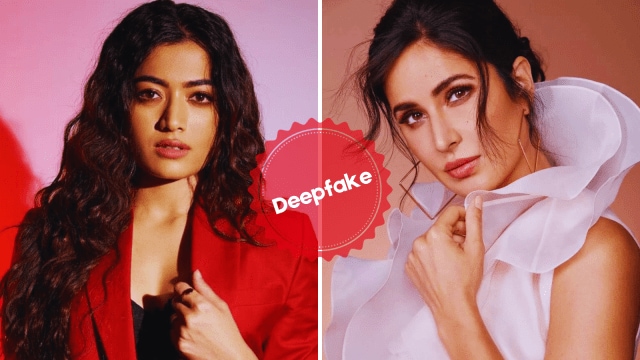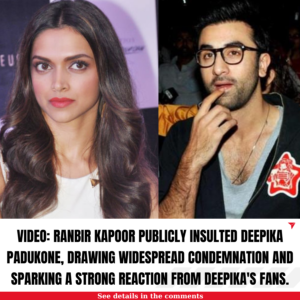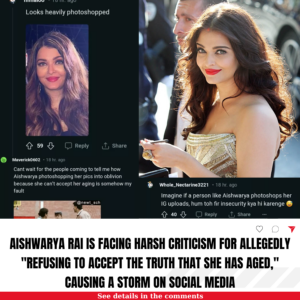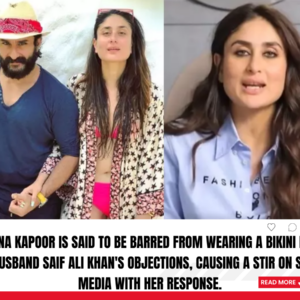Rashmika Mandanna’s deepfake video has brought to attention the perils of identity theft. Here are a few telltale signs of this sophisticated AI-backed tech.

The Ministry of Electronics and IT (MeitY) also relayed advisories to Facebook, Instagram, and YouTube asking them to take down any such misleading content generated using AI – deepfakes. (Express Image/Instagram)
Listen to this article
Ever since a Deepfake video of popular Bollywood actress Rashmika Mandanna went viral on the internet, there has been a call for stringent action against perpetrators of such crimes. Bollywood actress Katrina Kaif too seems to have been a victim of a similar Deepfake video. A screengrab of Kaif from a fight sequence in the upcoming ‘Tiger 3’ has been going viral ever since. The videos seem to have been created with the intent to show the popular actresses in a poor light.
However, soon after Mandanna’s fake video came to the fore, several Bollywood stars including Amitabh Bachchan came in support of the actress, urging authorities to take cognizance of the matter. Soon after, the Ministry of Electronics and IT (MeitY) also relayed advisories to Facebook, Instagram, and YouTube asking them to take down any such misleading content generated using AI – deepfakes, within the next 24 hours.
While Mandanna’s video may have stirred up a storm on social media, deepfakes are not a new phenomenon. During the Covid-19-induced lockdowns, a TikToker known as Miles Fisher, who is also a look-alike of Hollywood superstar Tom Cruise, fooled millions of users with his deepfake videos of the popular star. Back then, videos of Cruise playing guitar, Golf, or simply following TikTok trends spread like wildfire on social media. While it may be difficult to discern fact from fiction, here are some telltale signs of a deepfake video.
Spotting a deep fake
With technology improving rapidly, it has become difficult to tell real from fake images.
Look at the eyes: Research published in 2018 claimed that deepfake faces don’t blink like the way normal humans do. However, in the Mandanna video, one could see that she blinks twice. Yet, noticeably, the eyes look different. Eyes can reveal a lot more if observed closely.
Read the lips: Deepfakes, often of poor quality, are easy to spot, mainly because of bad lip-syncing. Look at the way the lips move based on the audio. Deepfake videos may show some anomalies.
Skin: The skin tone of the real person can give away the fake one. Deepfake videos often show blemishless skin, or even the tone can be patchy. Also, strange body movements could be one of the signs.
The hair and teeth: Hair contains finer details, making it difficult for deep fake software to render well. Look for the strands on the fringe; the hair may just help you decode the video. Sometimes, teeth too can be a big giveaway as they may not appear as natural as they should.
Look for the jewellery: If the person is wearing jewellery, then chances are high that they may look unusual owing to the lighting effects.
So what exactly is a deepfake?
It is in essence, a program that is based on a form of artificial intelligence known as deep learning, which is used to make images and videos of fake events. With deepfake technology, anyone can make a politician, celebrity or popular athlete parrot any lines. One can make their favourite or not-so-favourite stars dance to their tunes, quite literally.
Deepfakes are synthetic media that are made using artificial production, modification, or manipulation of images, videos, or audio with the help of AI. The technology may come with positive use cases, such as in the field of movies for visual effects, in Augmented Reality to create avatars for an assortment of services, social media activities, education, and more. Unfortunately, ever since they surfaced, they have been mostly used for political misinformation, revenge porn, fake celebrity, and committing fraud to dupe unsuspecting consumers.
The rapid proliferation of deepfake technology is also credited to the new techniques being introduced at a rapid pace. This lets anyone with barely passable editing skills make these videos with relative ease. It is to be noted that deepfakes are not just for videos, they can be used to manipulate audio too.
How are deepfakes created?
The algorithm traces similarities between the faces and later brings them down to their commonly shared features. Different sets of decoders are trained on both faces. In order to create the deepfake, the creator simply needs to swap the faces from their respective decoders. To make it simple, a compressed image of person X is fed into the decoder which is trained on person Y. The decoder later restructures the face of X based on the expressions of Y.
To make this look convincing, one would have to do the same process frame by frame. There is also another way to make deepfakes with a method known as generative adversarial networks or Gan which yokes two AI algorithms to produce the outcome.
News
Viral video: Palak Tiwari spotted leaving Ibrahim Ali Khan’s house following breakup rumors.
Palak Tiwari Spotted Leaving Ibrahim Ali Khan’s House Amid Speculations of Relationship Status In a recent and highly-discussed development within celebrity circles, a viral video capturing Palak…
Video: Ranbir Kapoor publicly insulted Deepika Padukone, drawing widespread condemnation and sparking a strong reaction from Deepika’s fans.
Video: Ranbir Kapoor Publicly Insults Deepika Padukone, Sparking Controversy In a recent shocking incident in Bollywood, Ranbir Kapoor publicly criticized his former girlfriend, Deepika Padukone, sparking outrage…
Aishwarya Rai Rolls Her Eyes At Abhishek Bachchan, Shweta-Jaya Royally Ignore Them In Viral Video
In a recent video from ‘The Archies’ premiere, Aishwarya Rai was seen rolling her eyes at Abhishek Bachchan and Shweta-Jaya royally ignored them. Abhishek Bachchan and Aishwarya…
Aishwarya Rai is facing harsh criticism for allegedly ‘refusing to accept the truth that she has aged,’ causing a storm on social media.
Aishwarya Rai Gets Trolled For Posting Edited Pictures, Netizen Says, ‘She Can’t Accept Her Ageing’ Aishwarya Rai gets brutally trolled for posting her edited pictures on social…
When Bobby Deol’s Wife, Tanya Allegedly Slapped Kareena Kapoor, Latter Said, ‘She Didn’t Behave…’
Throwback to the slapgate controversy, in which Kareena Kapoor was allegedly slapped by Bobby Deol’s wife, Tanya Deol. Catfights are common in the glamour world, and we…
Kareena Kapoor is said to be barred from wearing a bikini due to her husband Saif Ali Khan’s objections, causing a stir on social media with her response.
Kareena Kapoor Khan gives the sassiest reply to a troll asking how Saif Ali Khan lets her don a bikini [Watch] Kareena Kapoor Khan had this to…
End of content
No more pages to load











